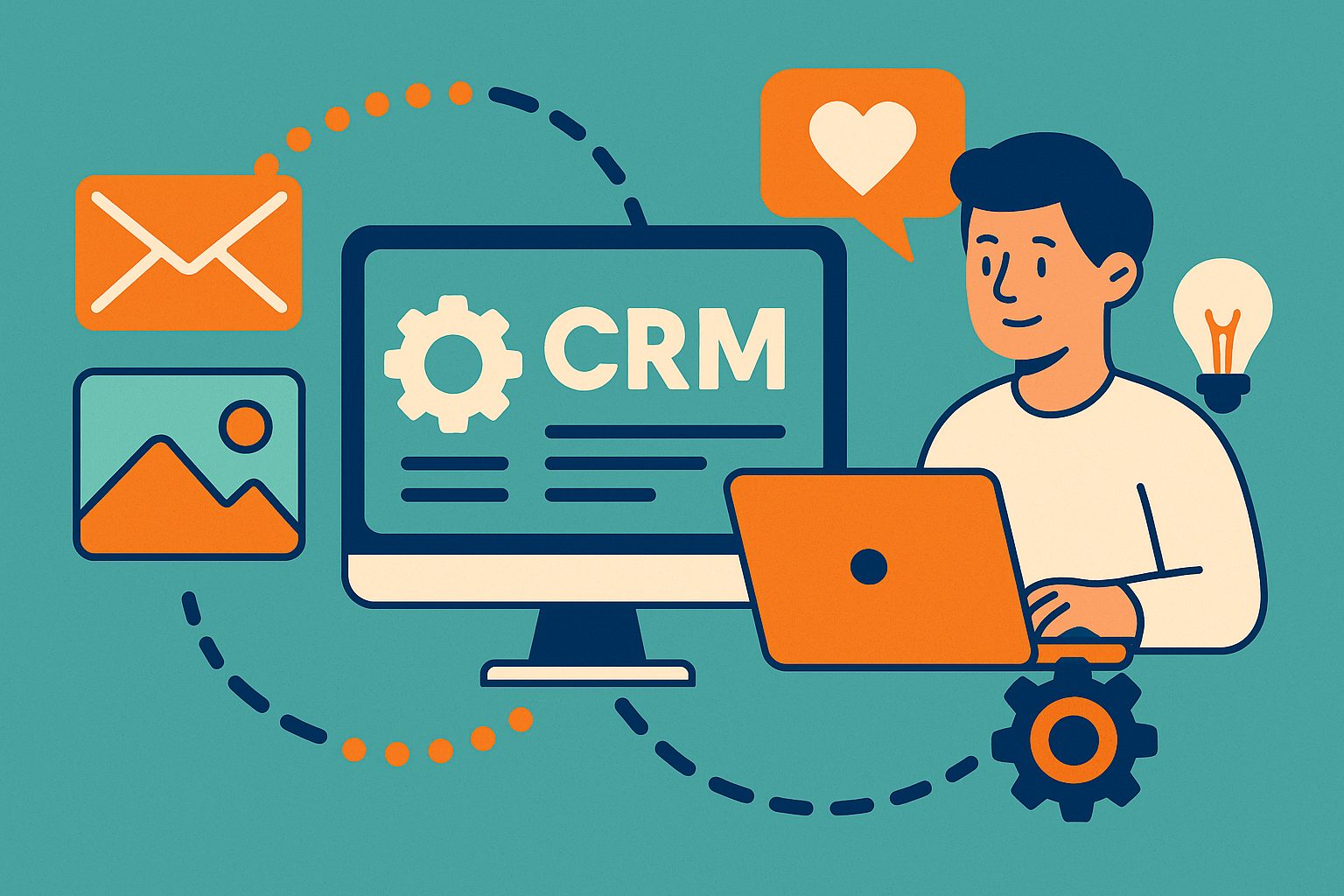The Secret Ingredient Behind High-Performing Creator Campaigns
Every successful creator campaign has a lot happening behind the curtain—brilliant branding, social buzz, reward strategy, and storytelling. But one piece of the puzzle that’s often overlooked is CRM integration. While it might sound like something reserved for corporate sales teams, Customer Relationship Management systems are becoming a powerful tool for creators who want to level up. Whether you’re launching a crowdfunding project, a digital product, or a creative service, having a CRM in place—and seamlessly integrating it with your campaign stack—means managing your community with intention, precision, and care. It’s not just about storing contact info. It’s about building relationships, automating your outreach, and guiding every supporter from curious observer to raving fan.
Why CRM Systems Matter More Than Ever
For creators, managing an audience is no longer just about tracking followers or responding to DMs. As your reach grows and your campaign scales, the need to track interactions, segment supporters, and stay consistent across communication channels becomes critical. This is where a CRM becomes your mission control. A well-integrated CRM lets you know who signed up for your pre-launch email list, who clicked on your last newsletter, who pledged and at what tier, and who hasn’t yet taken action but might need a nudge. It allows you to personalize your outreach without having to remember every detail manually. And when you connect your CRM to your campaign tools—whether it’s your crowdfunding platform, landing page builder, or email system—it becomes a living system that adapts in real-time to your supporters’ actions.
Choosing the Right CRM for Your Campaign Style
Not all CRMs are built alike, and choosing the right one depends heavily on the way you work. Solo creators, for example, might lean toward lightweight, creator-focused platforms like ConvertKit, which keeps the setup simple while offering powerful tagging and automation. Larger teams or campaigns with multiple revenue streams might benefit from the flexibility of HubSpot or ActiveCampaign, both of which offer in-depth customization, robust reporting, and multichannel support. The most important thing is choosing a CRM that fits seamlessly with your current workflow and tools. If you’re working with Shopify or Gumroad post-launch, make sure your CRM integrates cleanly with those platforms. If your campaign depends heavily on email automation, make sure the CRM supports advanced sequencing, segmentation, and real-time syncing. The smoother the fit, the less time you’ll spend fiddling—and the more time you can spend creating.
Making Integration Effortless with Pre-Built Connectors
Integrating a CRM with your campaign doesn’t have to mean hiring a developer or becoming one yourself. Thanks to tools like Zapier, Make, and native API connections, many of the most common integrations are already built and ready to go. For example, you can automatically add new Kickstarter backers to your CRM as soon as they pledge. You can tag new email subscribers who click on a campaign preview link. You can even set up conditional workflows that send a personal thank-you email when someone pledges at a certain tier. These automations ensure that your CRM stays updated in real time, turning your dashboard into a dynamic campaign tracker. With pre-built integrations, setup takes minutes—not days—and every touchpoint becomes part of a cohesive strategy.
Creating a Personalized Experience at Scale
One of the biggest challenges creators face as their campaigns grow is maintaining the intimacy that early fans loved. A CRM, when integrated properly, helps you scale your communication while keeping it personal. You can segment your contacts based on how they discovered your campaign, what emails they’ve opened, what they clicked on, or what reward tier they chose. Then you can send targeted updates that feel tailored—even when they’re automated. For example, first-time supporters might get a welcome sequence introducing your creative process, while longtime fans get early access to new features or rewards. These personal touches make your audience feel seen and appreciated, which in turn drives loyalty, referrals, and recurring support. It’s this blend of automation and authenticity that CRM systems make possible.
Tracking Campaign Momentum in Real-Time
Your CRM isn’t just a storage tool—it’s a live feed of campaign momentum. With the right integrations in place, you can watch as new contacts enter the system, track who’s converting, and monitor the effectiveness of different outreach strategies. Are more people signing up after your YouTube launch video or your podcast interview? Did your mid-campaign update email drive more traffic than your Instagram Reel? By tracking these touchpoints in your CRM, you gain insight into what’s working and when. Real-time analytics allow you to pivot fast, double down on high-performing tactics, and correct course when something isn’t landing. This agility is what gives top campaigns their edge—and it starts with knowing your numbers, not guessing them.
Aligning Your CRM with Your Email and Ads
If you’re running email campaigns, social ads, or influencer promotions, integrating your CRM makes the entire operation more intelligent. When your email platform syncs with your CRM, you can track open rates, click behavior, and conversions directly within contact profiles. This means no more jumping between tools to figure out what worked. You can create automated sequences based on user behavior—like sending a follow-up email two days after a backer clicks a stretch goal link but doesn’t pledge. On the advertising side, CRM tools that connect with Meta or Google Ads allow you to sync audience lists, build lookalike audiences, and retarget users based on actions taken inside your funnel. You’re no longer pushing ads into the void—you’re delivering them to people who already know your name and are most likely to act. That’s how creators stretch budgets and boost results without burning out.
Building Relationships That Outlast the Campaign
Your campaign might have a fixed start and end date, but your relationship with your supporters doesn’t. A CRM helps you build those relationships long after the final countdown. Post-campaign, you can use your CRM to send updates about production, surveys, shipping timelines, and exclusive sneak peeks. You can follow up with repeat offers, behind-the-scenes content, or private communities. More importantly, you can track who opens your updates, who refers new supporters, and who keeps engaging. This allows you to prioritize your energy and show appreciation to your biggest fans. Instead of starting from scratch with your next launch, you can tap into an audience that already trusts you—because you’ve maintained that trust between campaigns. CRM integration makes this continuity possible and effortless.
Integrating with E-Commerce and Fulfillment Systems
For campaigns that evolve into product lines or full-scale businesses, a CRM becomes even more essential. As you transition from crowdfunding to e-commerce, you’ll want to keep all your customer data in one place. Many CRMs integrate with Shopify, WooCommerce, or even tools like ShipStation and Easyship, allowing you to see the full lifecycle of a supporter—from campaign backer to repeat customer. You can trigger personalized product recommendations, loyalty discounts, or anniversary emails based on past behavior. You can analyze average order value, churn risk, and lifetime customer value—all from your CRM dashboard. This kind of insight helps you grow with confidence and retain the community you worked so hard to build. In short, your CRM doesn’t stop working when the campaign ends—it becomes the cornerstone of your creative business.
Avoiding Common Pitfalls and Integration Mistakes
As powerful as CRM integrations can be, they’re not foolproof. Many creators make the mistake of rushing into complex setups without a clear strategy. They connect everything but forget to map out the desired workflows, resulting in messy tagging, broken automations, or confusing customer journeys. The key is starting simple and building smart. Begin with your most critical workflows—like syncing backers to a welcome email series or tagging contacts based on reward tiers. Test these flows thoroughly before layering in more complexity. It’s also vital to maintain clean data hygiene. Remove duplicates, update old contacts, and ensure that your segmentation rules make logical sense. A cluttered CRM is worse than no CRM at all. But with intentional setup and regular maintenance, your integration will run like clockwork—and deliver the results you expect.
Future-Proofing Your Campaign Strategy
What you build today should support what you want to launch tomorrow. A CRM, when integrated with long-term vision, becomes more than a campaign tool—it becomes your growth partner. With each new campaign, you’ll have a better understanding of your audience’s preferences, behaviors, and conversion triggers. You’ll be able to A/B test with confidence, personalize with purpose, and scale your messaging across platforms and projects. The campaigns of the future won’t be about shouting louder. They’ll be about speaking directly—and meaningfully—to the right people. CRM integration gives you the data, tools, and structure to make that possible. Whether you’re planning a new crowdfunding project, expanding to e-commerce, or building a membership platform, a seamless CRM system lays the groundwork for sustainable success.
Your Creative Vision Deserves Smart Systems
At its core, CRM integration isn’t about automation or metrics—it’s about amplifying your creativity. It’s about building systems that support your vision, connect with your supporters, and scale your story with grace. As a creator, your time is best spent making, not micromanaging. When your CRM works in harmony with your campaign, your communications feel more human, your outreach becomes more impactful, and your momentum never misses a beat. The creators who rise above aren’t just brilliant—they’re organized, responsive, and intentional. And that’s exactly what seamless CRM integration helps you become.




